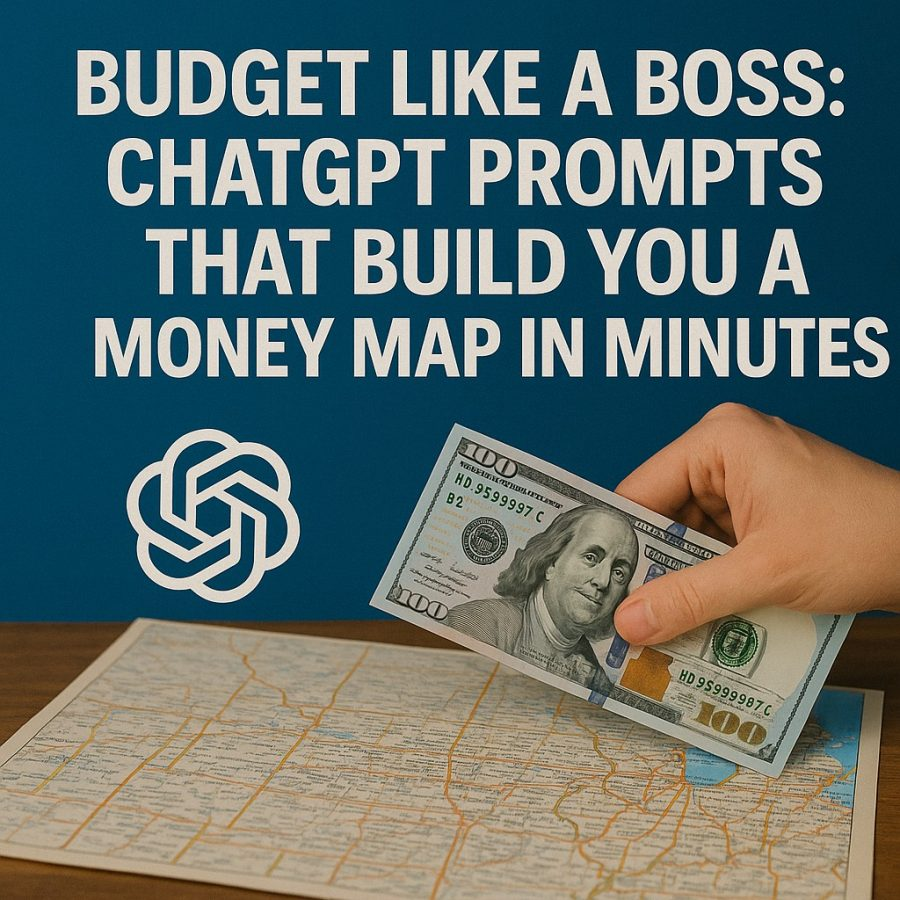Views: 0
Budgets get a bad reputation. They are treated like crash diets for your wallet, strict plans you start with good intentions but abandon after a week. The truth is that budgeting is not about punishment, it is about clarity. A budget is a money map, guiding you from the land of “Where did my paycheck go?” to “I know exactly what my money is doing.”
The fastest way to create that map is with ChatGPT prompts designed to turn raw income and spending data into actionable strategies. Forget endless Excel formulas or overpriced financial software. You can budget like a boss in minutes by asking the right questions and letting AI handle the heavy lifting.
Why You Need a Money Map
Without a money map, you are driving blind. You might feel like you are moving forward, but one wrong turn and you are back in overdraft city. A money map helps you see where cash is flowing, where it is leaking, and how to reroute it toward your goals.
Budgeting like a boss means turning guesswork into a clear plan. That plan lets you take control, reduce stress, and finally feel like your money is working for you instead of against you. With ChatGPT prompts that build you a money map in minutes, you skip the confusion and get straight to structure.
Budget Like a Boss with AI
Traditional budgeting advice is often too generic. It says, “Spend less, save more,” without showing you how. ChatGPT changes the game by creating personalized maps based on your actual situation. Whether you want a simple spending tracker or a detailed zero-based budget, you can generate it instantly.
Think of it as hiring a financial coach who never sleeps, never charges by the hour, and never makes you feel guilty for buying tacos on a Wednesday.
Step One: Audit Your Spending
Before you can map out a route, you need to know where you are starting. Auditing spending is the first step to budget like a boss.
Prompt: “Review my monthly spending in categories like rent, food, utilities, transportation, entertainment, and subscriptions. Show me which categories take up the largest percentage of my income.”
Prompt: “Identify three areas where I overspend and suggest realistic ways to cut back without sacrificing quality of life.”
Prompt: “Create a breakdown of my last 30 days of expenses and highlight which ones are non-essential versus essential.”
This step feels like shining a flashlight in a messy closet. At first, it is uncomfortable, but once everything is visible, you know what to keep and what to toss.
Step Two: Build the Budget Framework
Now that you have clarity, it is time to build your money map. The framework is where you decide how each dollar gets used.
Prompt: “Create a 50/30/20 budget for an income of $4,000 after taxes. Show me the exact amounts for needs, wants, and savings.”
Prompt: “Design a zero-based budget for $3,200 monthly income where every dollar has a job, prioritizing debt repayment and savings.”
Prompt: “Write a simple envelope-style budget where my income is split weekly into spending categories.”
Budgeting like a boss is not about picking the “right” framework. It is about choosing the one that fits your lifestyle and makes sense for your goals.
Step Three: Automate Your Map
A money map only works if you actually follow it. Automation ensures you stick to the plan without relying on willpower.
Prompt: “Build a monthly budget checklist that tracks income, bills, savings contributions, and leftover cash. Format it so I can copy it into Notion.”
Prompt: “Generate a system where 10 percent of my paycheck automatically goes into savings before I spend on anything else.”
Prompt: “Write a recurring reminder script that helps me review my budget every Friday for 10 minutes.”
When you automate, you remove the friction. Following your money map becomes as natural as brushing your teeth.
Step Four: Set Short-Term and Long-Term Goals
A boss-level budget is not about pinching pennies forever. It is about building toward goals that excite you. That means both short-term wins and long-term milestones.
Prompt: “Help me set three short-term savings goals under $1,000 each, and create a plan to reach them within six months.”
Prompt: “Design a roadmap for long-term goals like retirement savings, a new car, or a down payment on a house, showing how much I need to save monthly.”
Prompt: “Write a motivational progress tracker that celebrates milestones when I hit 25 percent, 50 percent, and 75 percent of my goal.”
Goals transform your budget from a boring chart into a money map that actually motivates you.
Step Five: Adapt the Map as Life Changes
Budgets are not static. A money map has to adjust as your income, expenses, and priorities evolve. This is where ChatGPT helps you adapt on the fly.
Prompt: “Update my budget for a new monthly income of $4,800 while keeping my savings goals intact.”
Prompt: “Adjust my budget to account for new expenses like childcare or medical bills without derailing my savings plan.”
Prompt: “Recalculate my budget if I want to increase retirement contributions by 5 percent while keeping debt payments steady.”
Boss-level budgeting means knowing your map can flex without falling apart.
Why Budget Like a Boss Works
This approach works because it combines clarity, customization, and motivation. You see exactly where your money goes, you design a plan tailored to you, and you keep yourself excited by tracking wins. With ChatGPT, you create your money map in minutes instead of weeks.
Budgeting is no longer a chore. It becomes a tool that empowers you to say yes to what matters most and no to what drains your wallet.
From Confusion to Confidence
If you have ever wondered why your money disappears the moment it hits your account, now you have the solution. With ChatGPT prompts that build you a money map in minutes, you can budget like a boss. You move from confusion to confidence, from reactive spending to intentional planning.
Your money map is not just numbers on a screen. It is your guide to less stress, more savings, and a future that feels within reach. All it takes is a few minutes, the right prompts, and the willingness to start.




